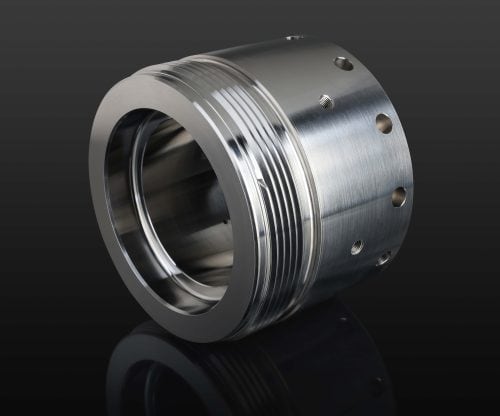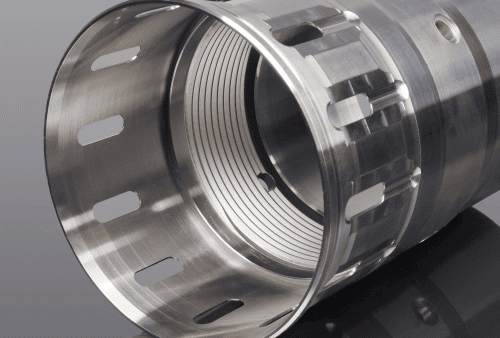Computer Numerical Control (CNC) machining is a metal fabrication method that leverages written codes to control machinery in the manufacturing process. CNC machining is typically used to control several types of complex machinery, such as lathes, mills, CNC routers, grinders, and more. CNC machining allows for three-dimensional cutting tasks to be accomplished in a single set of prompts.
How Does CNC Machining Work?
CNC machines work like robots. After activating the CNC system, the selected cuts are entered into the software and guided to corresponding tools and machinery. Since the CNC machines are fully automated, they carry out the dimensional tasks as specified and with a lot of precision. The placement of a tool is typically outlined by a myriad of inputs referred to as the part program that is inputted to computers through small keyboards. The CNC machines rely on programmed commands to function automatically without any intervention of a physical operator. Manufacturers typically enjoy various benefits through the application of CNC machining, including improved speed, better accuracy, enhanced productivity, and expense reduction.
Types of CNC Machines
There are several types of CNC machines, including:
- CNC Mills: CNC mills boast capabilities of running on programs comprising number and letter-based prompts to guided pieces across different distances
- Lathes: With lathe machines, pieces are typically cut in a circular direction with indexable tools.
- Laser Cutters: Laser cutters leverage a laser beam to cut the materials. This process is usually applied to metal materials, and is more accurate than plasma cutting.
- Electric Discharge Machines (EDM): EDMs leverage electrical sparks to cut workpieces into desired shapes.
- Water-Jet Cutters: Water-jet cutters leverage high-pressure applications of water to cut hard materials like metal and granite. Water can be mixed with sand or other powerful abrasive substances to cut factory machine parts through this process.
CNC Milling
CNC milling refers to a machining process that leverages computerized controls and rotating multipoint cutting tools to eliminate materials from a workpiece and progressively produce a custom-designed product or part. CNC milling is typically ideal for the finishing or secondary process of an already-machined workpiece. It helps produce desired product features such as threads, slots, and holes. The following is a typical CNC milling process:
- Step 1: Designing a CAD model: Involves the creation of a 2D or 3D CAD-part design
- Step 2:Converting the CAD model into a CNC program: During the milling process, the file is exported to CNC-compatible file format and converted to a CNC machine program that dictates the actions of the machine and movements of the tooling.
- Step 3: Setting up the CNC milling machine:The workpiece is affixed to the machine’s worktable and attached by the work holding device
- Step 4: Executing the milling operation: Once everything is set in place, the operator then launches the program via the machine interface. This prompts the machine to execute the milling process.
Types of CNC Milling Machines
Knee-type: Leverages a spindle affixed to a movable housing on the column to move the machine tool along the XY axes.
Bed-type: Employs worktables affixed directly to the machine bed to prevent the workpiece from moving along both the Y-axis and Z-axis.
Planer-type: Can support multiple machine tools simultaneously, which reduces the lead time for complex parts.
CNC Turning
CNC Turning refers to a manufacturing process where bars of materials are held and rotated while a tool is fed to the piece to remove material and create a preferred shape. This process has several advantages over the milling process. It guarantees a faster turnaround time and affordability. However, CNC turning may not be good at conserving the material, although it allows for complex design options.
During the CNC turning process, a cutting tool moves linearly while the workpiece rotates. The process leverages a CNC for the rotation. Typically the turning process helps get rid of materials and reduce the diameter of a workpiece. It also enables the production of a smooth-part finish. Notably, turning leverages simple, single-point cutting tools with each group of a working piece assigned an optimum set of tool angles developed through the years.
The following are the four types of CNC turning:
- Straight turning
- Taper turning
- Profiling
- External grooving
Axis CNC Machining
The following are the types of Axis CNC Machining:
3-Axis: This is a simple type of machining where the workpiece is fixed in a single position. The movement of the spindle is in the X, Y, and Z linear directions. 3-Axis is ideal for cutting sharp edges, drilling holes, milling slots, and automatic or interactive operations.
4-Axis: 4-Axis adds rotation about the X-axis, referred to as the A-Axis. It features a spindle with three linear axes of movement (X-Y-Z). With this type of machining, the A-Axis occurs by rotation of the workpiece. 4-Axis machining is ideal for intermittent cutting, continuous cutting, and engraving curved surfaces.
OPM Solutions
As the industry leader in CNC machining, OPM boasts unmatched experience and top-quality materials that meet your CNC machining needs. We understand each customer’s needs are different and partnering with us ensures you benefit from custom material, traceability in real-time, a shorter supply chain, and engineering and logistics support. Our goal is to ensure you get optimal CNC machining services that guarantee the highest quality products. If you have any questions or need to request a quote, contact us today.


